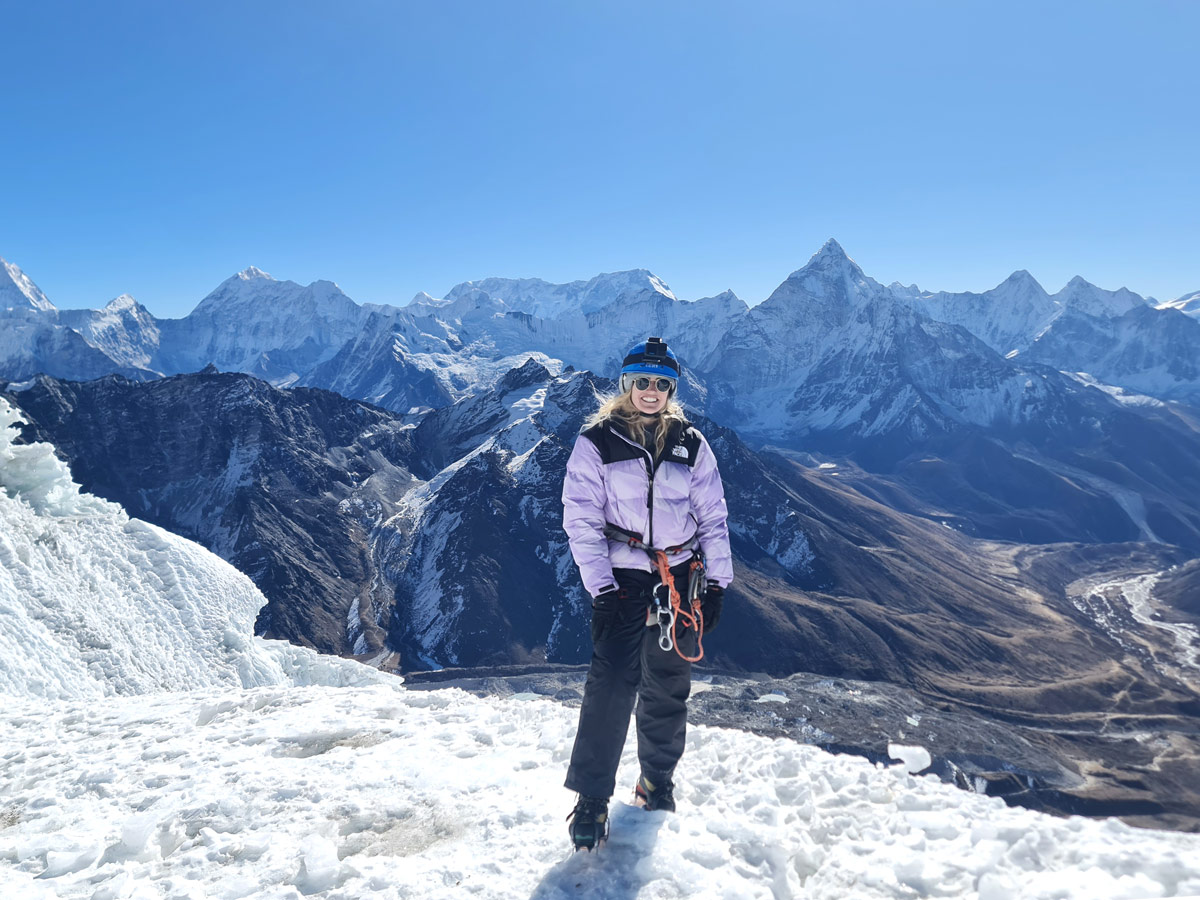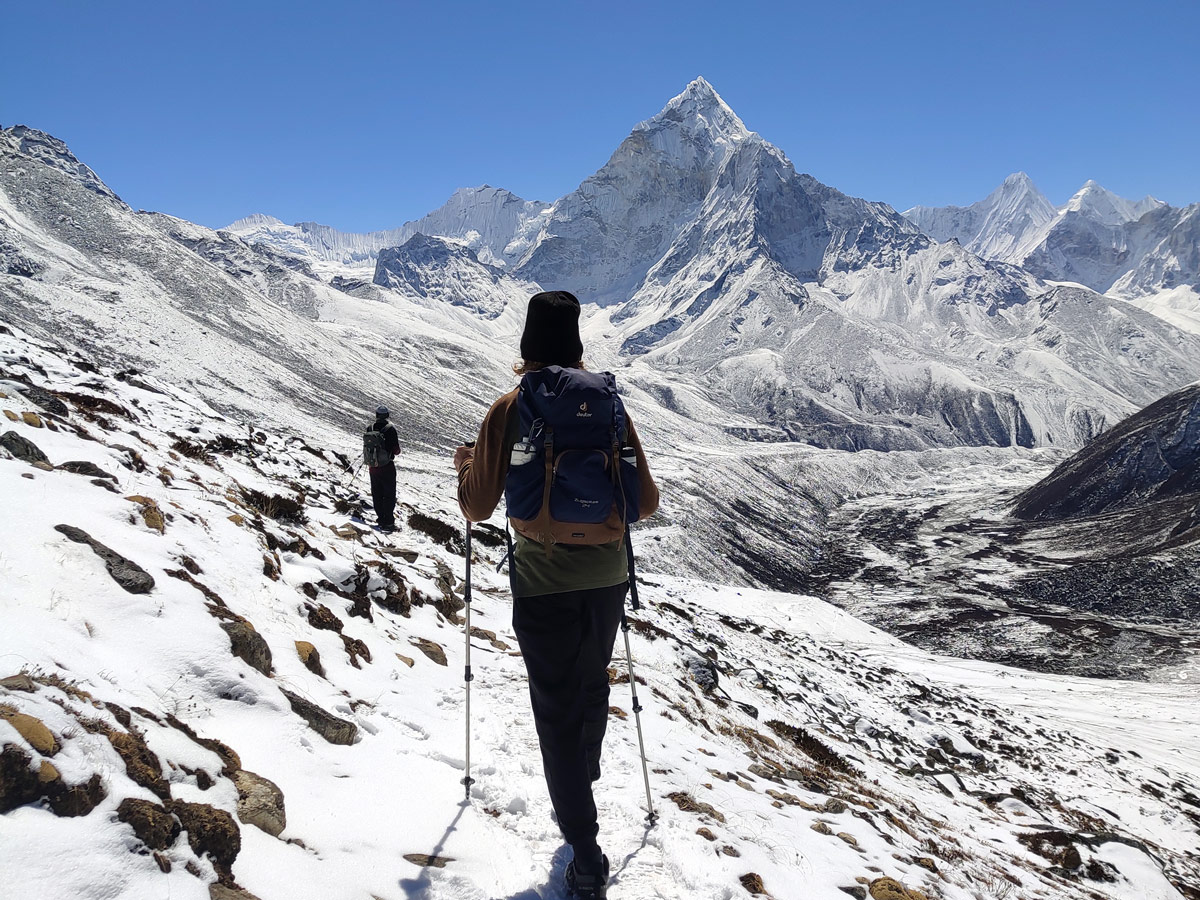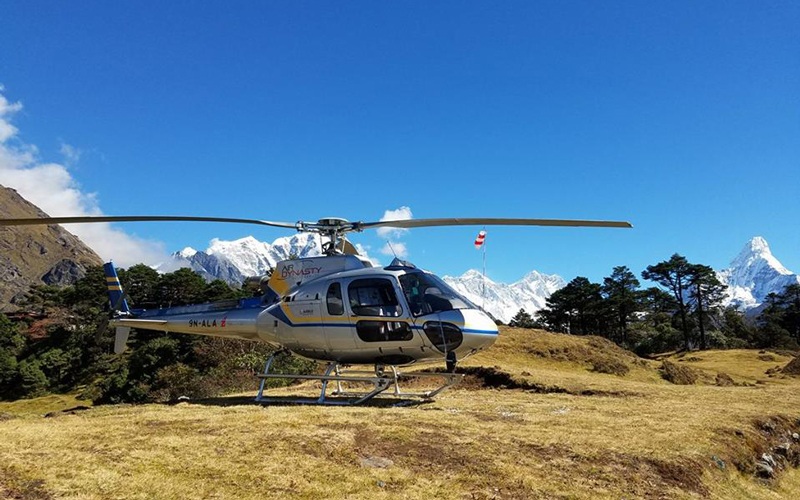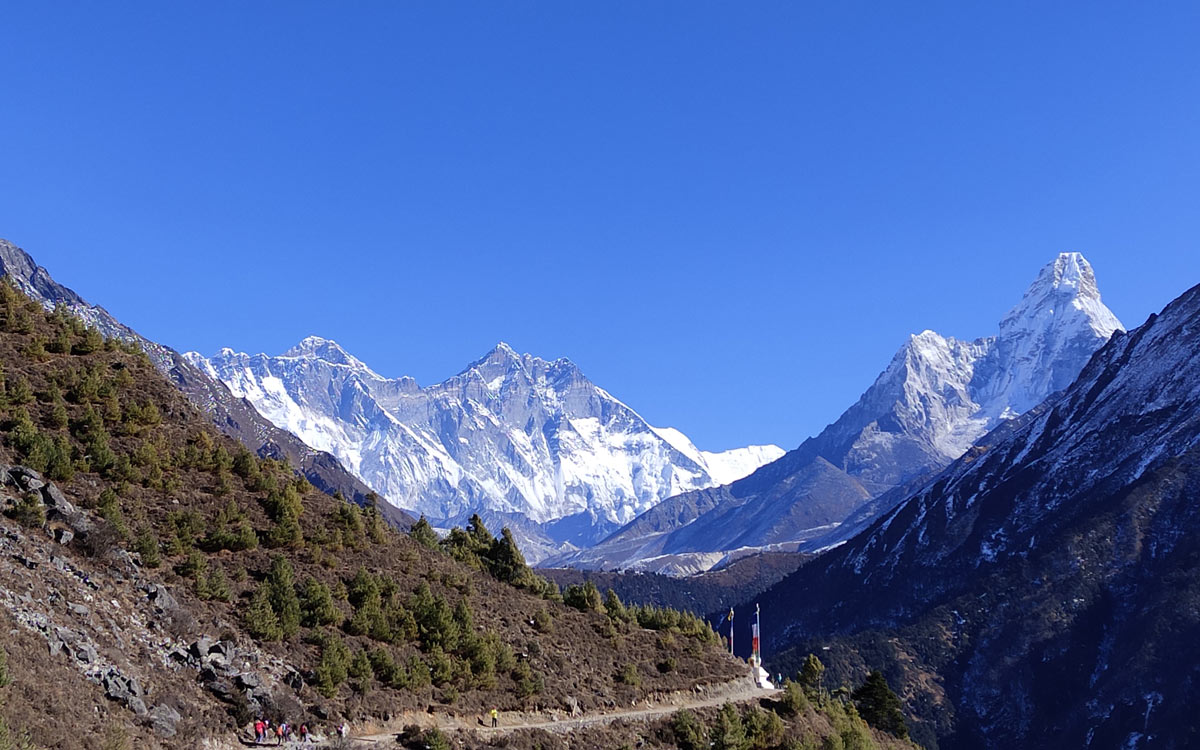The land of mystical mountains, Nepal features some of the most breathtaking peaks in the world, with eight of the fourteen 8000-ers being here. You must have heard countless times how Nepal is a majestic haven for trekking enthusiasts.
Trekking in Nepal is one of the best ways to explore these stunning peaks from a distance and indulge in their allure. However, the Himalayan majesty of Nepal is not just limited to trekking.
Now the thought of mountaineering must have crossed your head. But it is too tough, isn’t it? What about people who don’t have as much physical strength as required for mountaineering but would like to take their adventure a level above trekking?
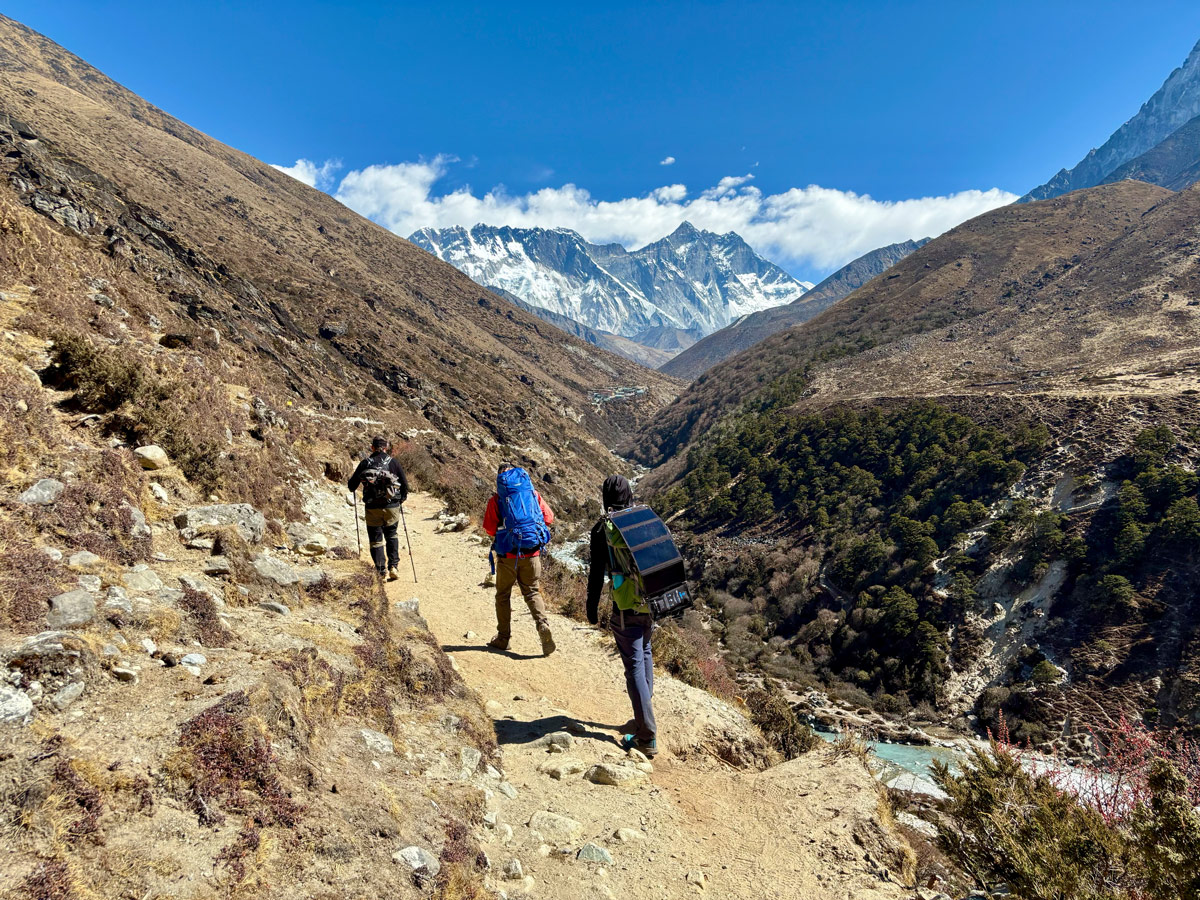
Well, worry not, Ace the Himalaya has got you. For those wanting to take a middle road between trekking and mountaineering, there is the option of exploring trekking peaks in Nepal.
Imagine standing on top of a Himalayan peak, the world stretching out beneath you, and you can see on display a panorama of snow capped giants and verdant valleys.
The feeling of accomplishment, the breathtaking views, the sheer adventure – this is the allure of trekking peaks in Nepal. Therefore, in this blog, we will be shortlisting the top trekking peaks in Nepal and telling you all you need to know about scaling them.
What are Trekking Peaks?
First of all, let’s understand what a trekking peak really is. Trekking peaks in Nepal are those mountains that are designated by the Nepal Mountaineering Association (NMA) that are easier and more accessible than expedition peaks.
These are basically mountains, but such mountains that require technical mountaineering skills and equipment yet are still climbable by “trekkers” who have some experience or obtain training.
In terms of altitude, these peaks lie somewhere in between the altitude range of treks and expedition peaks in Nepal. These peaks usually fall between 5,000 and 7,000 meters.

This provides the perfect opportunity for adventure enthusiasts to experience high altitude climbing without having to undergo and face the complexities of scaling 8,000-meter giants.
However, they do require basic mountaineering skills and a great deal of physical fitness as you will still be scaling a peak at the end of the day. Many trekking peaks in Nepal offer non technical routes suitable for beginners.
Many people are intimidated by the term “climbing.” However, with proper guidance and preparation, many of these peaks are very doable, and are a perfect introduction to peak climbing.
Why Choose Nepal for Trekking Peaks?
So, out of all the places in the world, why choose Nepal for trekking peaks? Well, here is why. Exploring trekking peaks in Nepal is not just about the adventure, it is much beyond that.
Nepal is renowned for its exceptional mountain landscapes, cultural richness, as well as its well established trekking infrastructure. Here are a few reasons why Nepal is a top destination for trekking peaks:
- Nepal has abundance of peaks as the country is home to over 1,300 peaks above 6,000 meters. You can pick a designated trekking peak based on your personal preferences.
- While scaling trekking peaks in Nepal, you will also be accompanied by stunning panoramic vistas of 8,000 meter giants like Everest, Lhotse, Annapurna range, Dhaulagiri range, Machhapuchhre, Ama Dablam, and more.
- You will also be exposed to lots of rich cultures and traditions as the mountain villages of Nepal feature of unique blend of Hindu and Buddhist traditions making it a melting pot of cultures.
- Nepal features numerous trekking routes, which means you will find that the trekking routes are quite well organized. You will find that there are many experienced guides and porters available along with numerous teahouses along the route.
Selecting the Right Peak for Beginners
Choosing your first trekking peak is crucial as this experience is going to be the deciding factor for how long is your journey of exploring trekking peaks going to be.
For the first time, it is best that you consider peaks whose altitude ranges anywhere between 5000 to 6000 meters and not beyond that. Also, select a peak with gradual altitude gain to facilitate acclimatization.
The most important thing is to pick a peak that matches your physical fitness. Don’t go beyond what your body can take as you might have to quit the adventure in between.
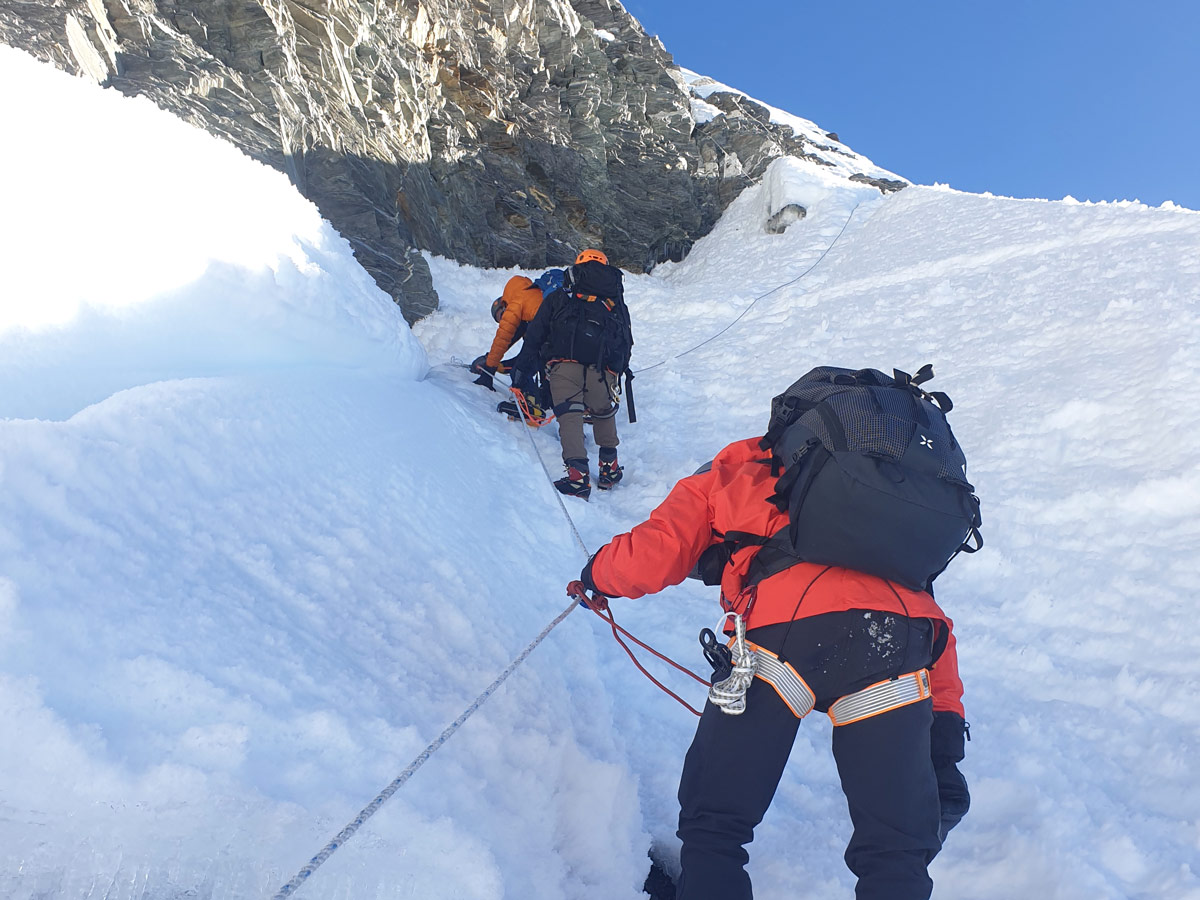
Consider other factors like technical difficulty, duration, cost, and accessibility of the peak too. The best seasons are spring (March-May) and autumn (September-November), offering stable weather and clear skies.
Experienced guides are essential, not only for safety but also for sharing their knowledge of the mountains, local climate, and local culture. At Ace the Himalaya, we provide expert guides who prioritize your safety and success.
Choose peaks that match your climbing ability and are not very technical which makes it difficult for you to tackle. Plan the trek according to your schedule and weather windows.
Top Trekking Peaks in Nepal
Nepal has countless mountains. While some of them are specifically for expedition, most of them are suitable to be trekking peaks. Below are some of the top trekking peaks in Nepal:
Island Peak (Imja Tse)
Located in the Everest region, the Island Peak is one of the most famous trekking peaks of Nepal. This peak also makes for a great choice for a beginner friendly mountaineering peaks in Nepal.
Going up to an altitude of 6,189 meters, this peak can be considered the perfect introduction to high altitude climbing. The peak is not very technical either, all you will need to learn is basic mountaineering skills with rope and crampon use.
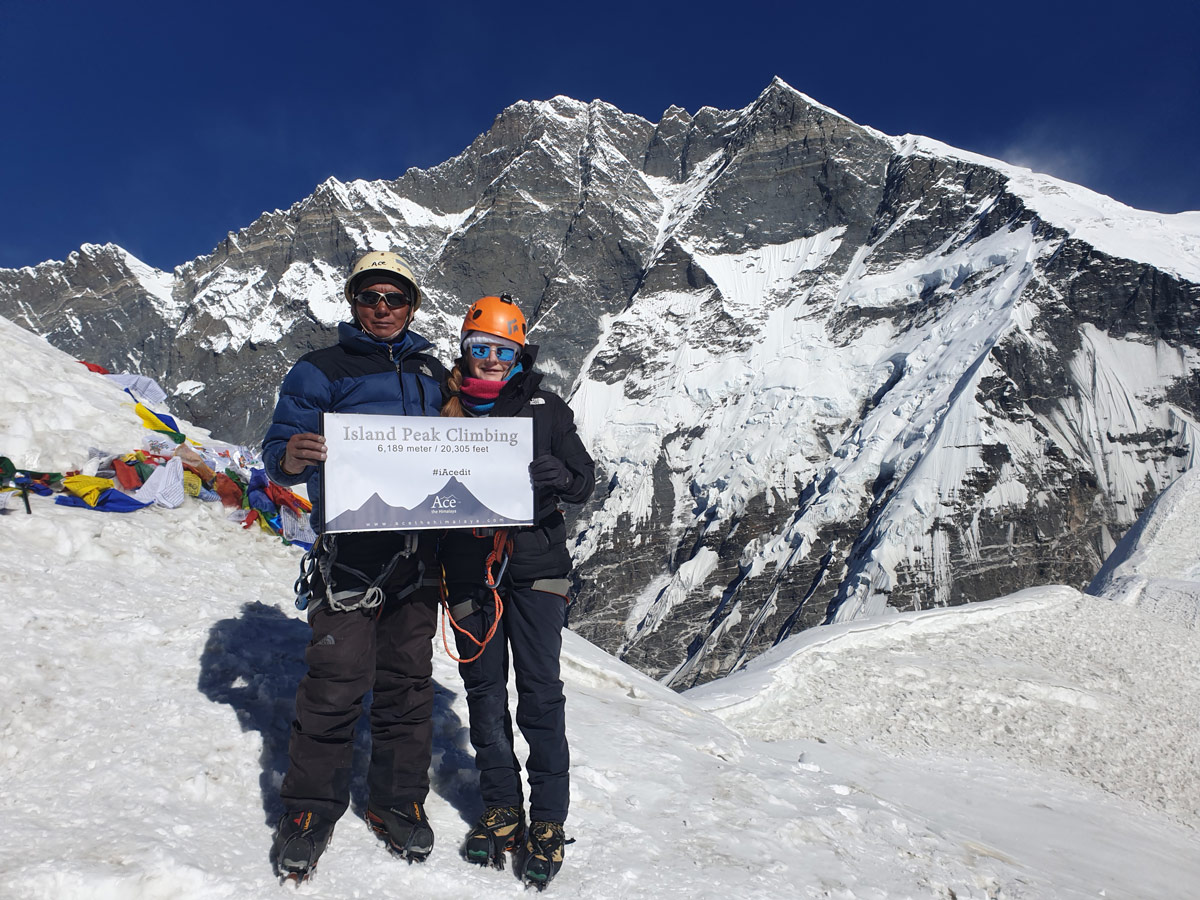
While trekking in the Imja Tse and to reach the summit, you do have to cross glaciers and navigate steep snow slopes. However, the views and the overall experience is completely worth the challenge.

From Imja Tse, you will get stunning views of Sagarmatha National Park and snow capped mountains including Lhotse, Everest, Ama Dablam, and surrounding peaks.
Mera Peak
Another quiet tough gem located in the Everest region within Hinku Valley, Mera Peak is a trekking peak that will take you to an altitude of 6,476 meters and push your boundaries.
This peak is also credited as the highest trekking peak in Nepal as it presents the trekkers with a tough altitude challenge. However, one good part about the altitude challenge is that the elevation gain is not gradual.
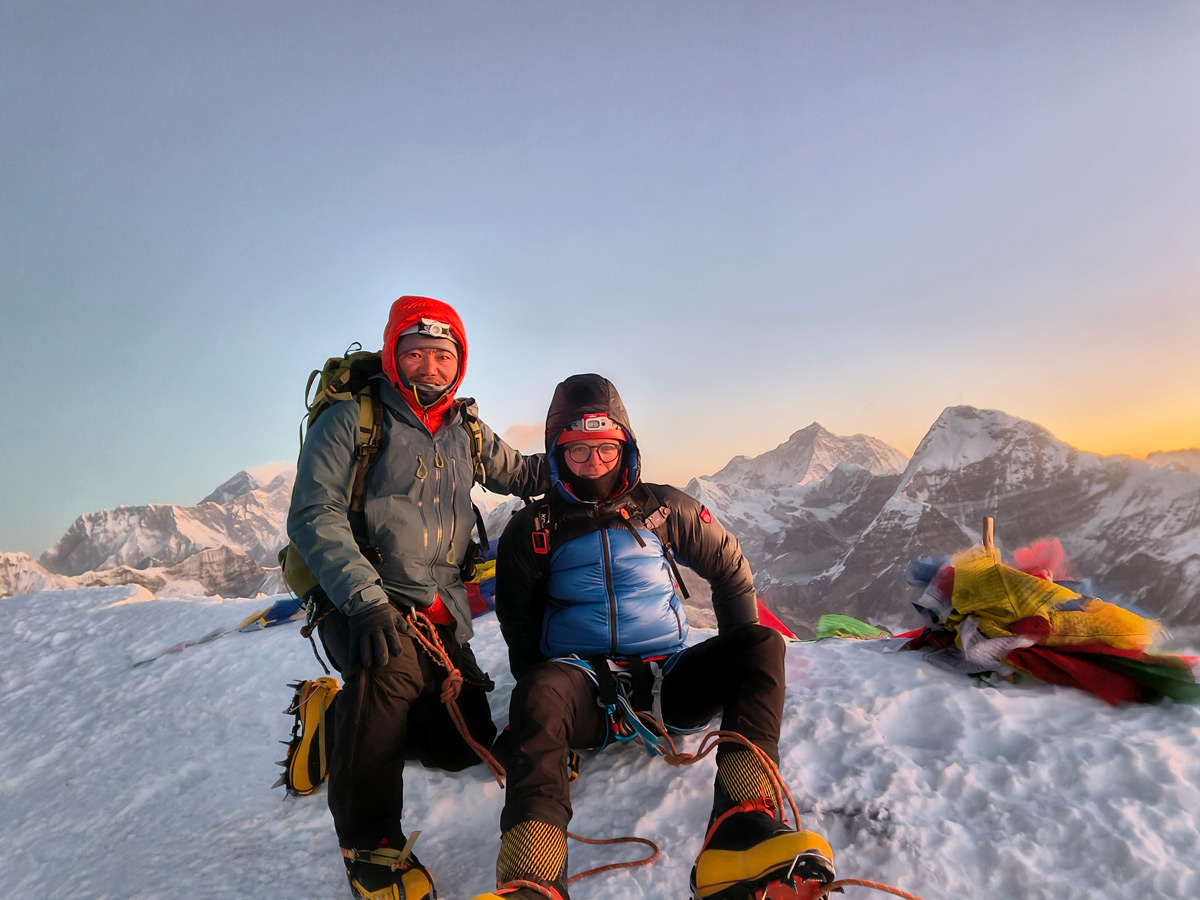
You will be crossing a gradual ascent passing through lush forests and remote villages full of traditions. Trekking on Mera Peak also required good technical skills and knowledge.
While technical climbing is not very much required, you should have a significant amount of endurance to be able to push through. You should be able to walk for long hours and you will also need to take at least a couple of days for thorough acclimatization.
The trail passes through an off-the-beaten trekking trail in the Everest region as it ventures towards the Khonch Valley before ascending to the steeper mountainous sections.
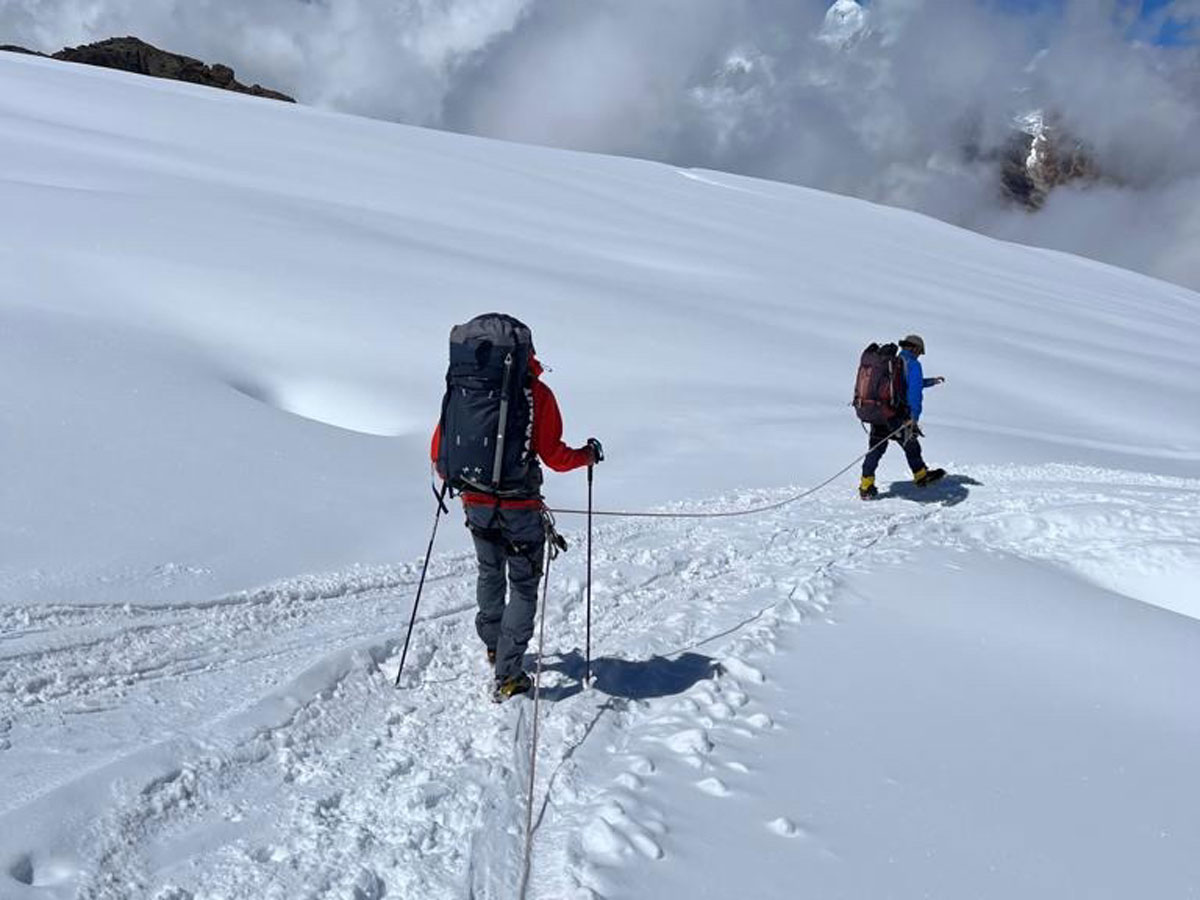
This trek is completed in around 18 to 20 days generally. But the number of days can change based on your body’s adaptation to the altitude. You will get stunning views of 8000-ers including Everest, Lhotse, Cho Oyu, Kanchenjunga, and Makalu along with other peaks.
As you finish your trek, u will also be crossing some other significant parts of the Everest region, like mountain passes of the Everest region including the Zartwa La Pass.
Lobuche East Peak
Located in the Khumbu region, Lobuche is one of the recurring names when the trekking peaks of Nepal and the highlights of trekking in Nepal are mentioned. This one is much more better suited for beginners.

Trekking to Lobuche East Peak can be the perfect opportunity for trekkers to transition into the world of high altitude explorations. This trek takes you up to an altitude of 6,119 meters.
However, trekking on Lobuche East Climbing requires more technical skills and knowledge. These technical sections can be conquered with basic knowledge of ice climbing and using crampons combined with strong cardiovascular endurance and ability to walk for longer hours.
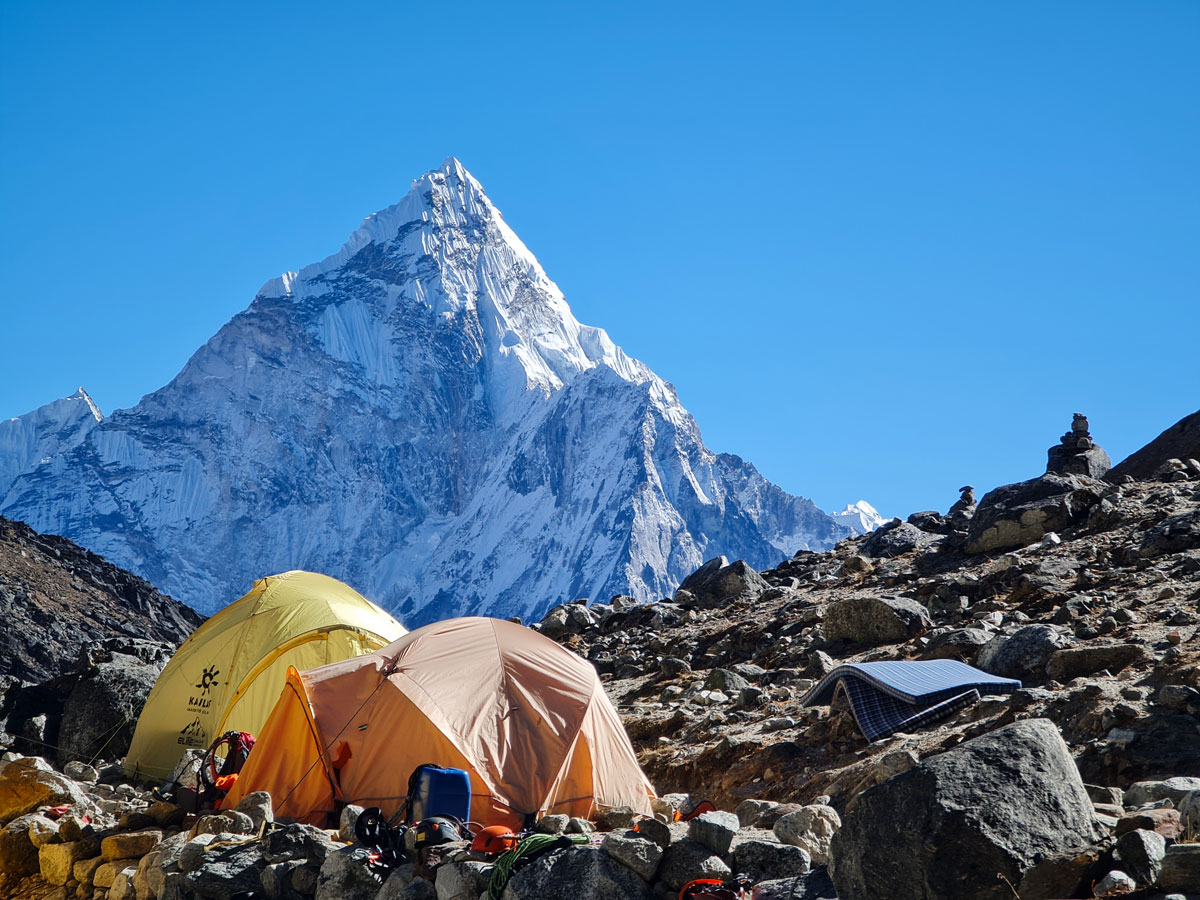
It is best that you take some basic training related to rope climbing, ice climbing, and rock climbing which can come handy in other trekking peaks as well as in mountaineering expeditions.
After going through certain challenges, you will be treated with fascinating rewards in the form of a stretched panoramic display of the entire Khumbu region with Mt. Everest.
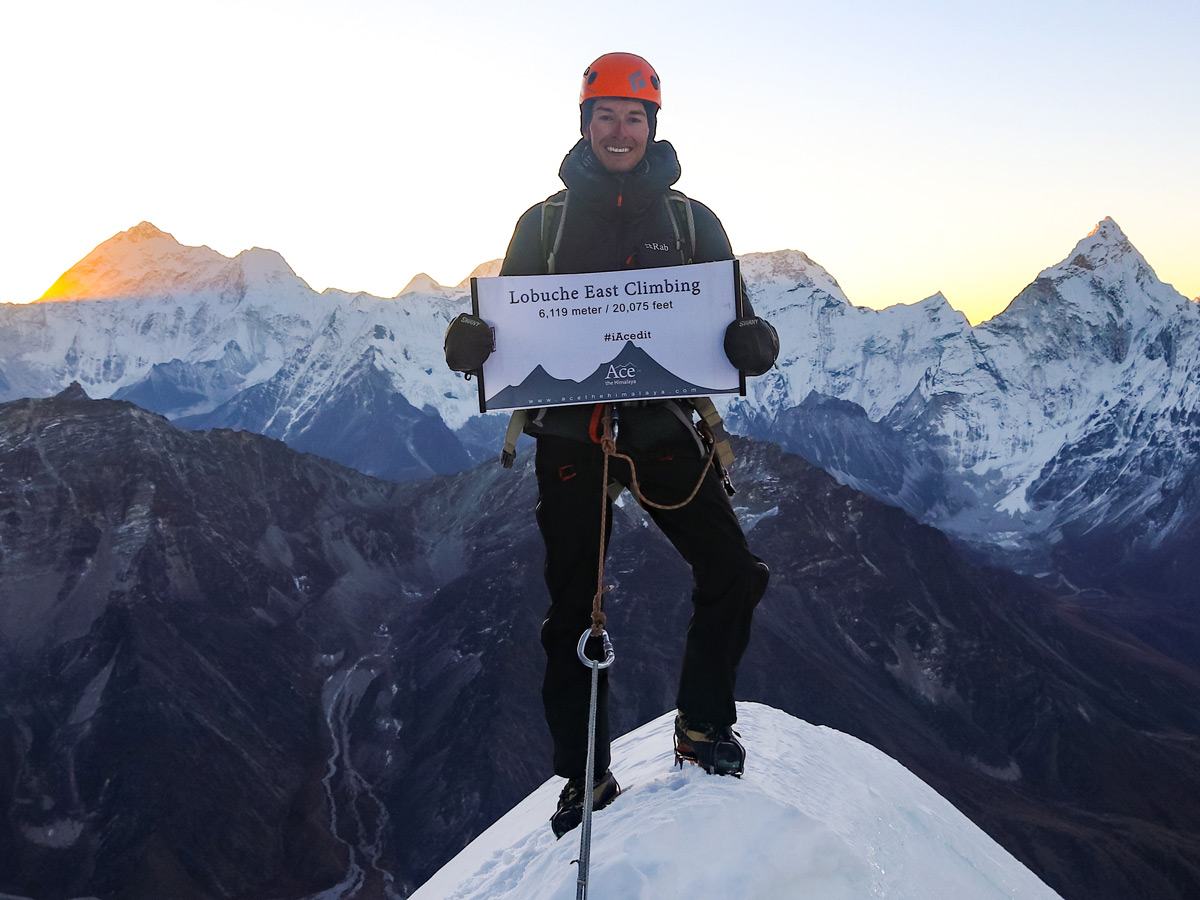
If you want to acclimatize better, you can combine this trek with the iconic Everest Base Camp Trek which will make this experience a best of both worlds- trekking trail and trekking peak.
Pisang Peak
Located within the Annapurna Conservation Area, the Pisang Peak will take you to an altitude of 6,091 meters. This is a great option for people seeking basic to moderate difficulty level.
If you are someone wanting to experience a culturally rich, scenic, and mildly challenging mountaineering expedition, Pisang Peak is the top trekking peak in Nepal for you.
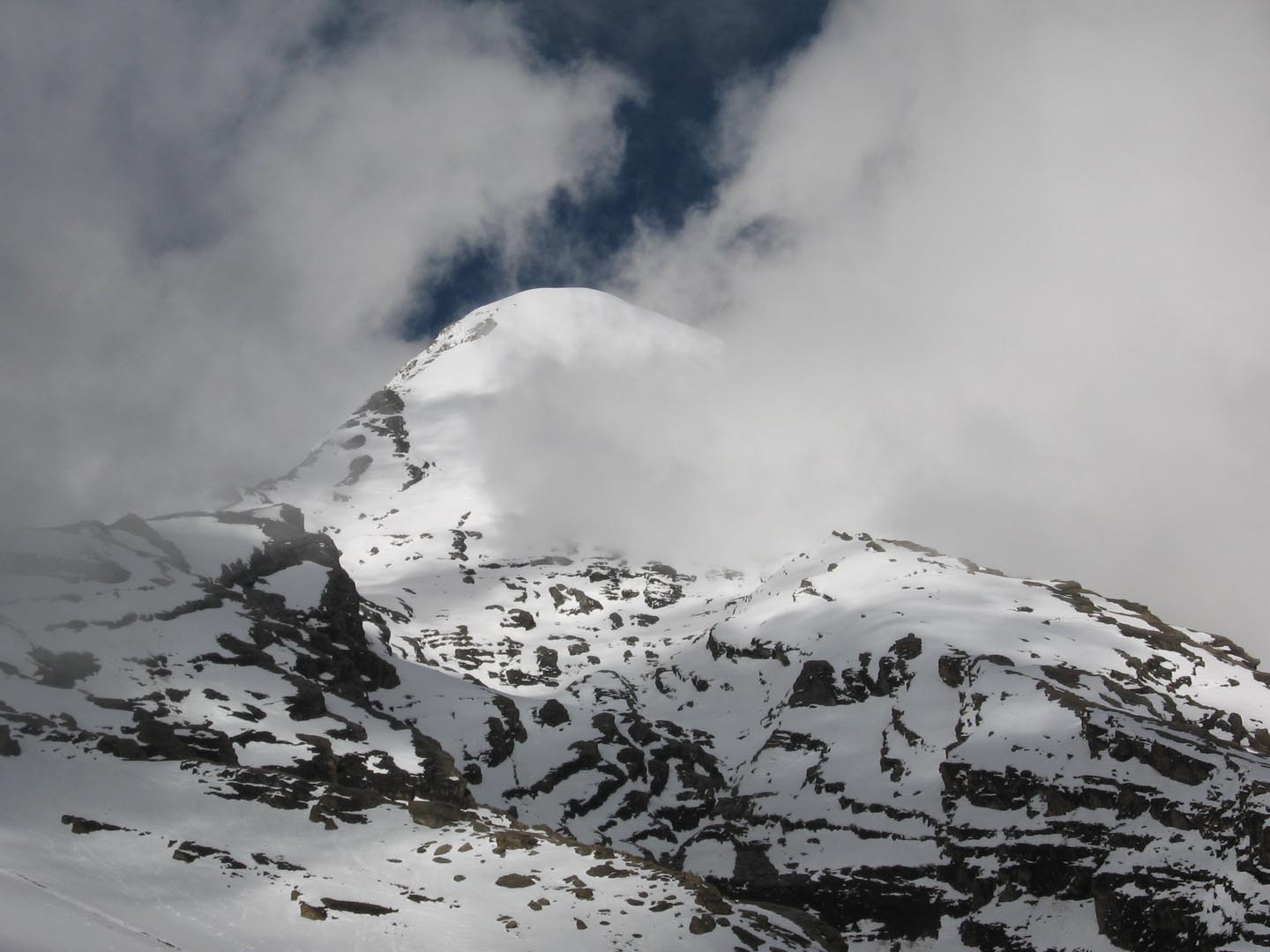
This one takes you to a slightly less elevation and doesn’t feature much of technical sections either. The climb up Pisang Peak can be considered a blend of trekking and climbing.
You get to see the natural beauty of Annapurna region in all its glory as you will be crossing the likes of Marshyangdi River Valley, visiting the unique Manang valley, and exploring Jomsom if you combine Pisang Peak exploration with Thorong La Pass.
The views from the top of the Pisang Peak display stunning panoramas of the Annapurna range and region, including Annapurna II, IV, and III. Also, this is a less frequented route which allows you to enjoy the adventure thoroughly.
Yala Peak
An underrated gem of the Langtang National Park, the Yala Peak is one of the easiest trekking peaks in Nepal as it takes you up to an altitude of merely 5,520 meters. This is easily manageable for experienced trekkers.
Even the route of the trek is pretty straightforward and features no technical sections or challenges. On the way, you will be passing through vantage points like Tserko Ri and getting rich cultural and spiritual experiences at places like Kyanjin Gompa.
Also, with the minimal technical requirements, this expedition still manages to take you through a scenic delight as you get breathtaking views of Langtang Lirung, lush valleys, glaciers, as well as Shishapangma at 8,013 meters.
You can also combine the Yala Peak expedition with Langtang Valley trek as it allows you a more elaborate exploration while also helping you adapt well to the altitude and climate before climbing the peak.
Pokalde Peak
Again, located in the Everest region, Pokalde Peak taking you to an altitude of merely 5,806 meters is an excellent option for trekkers with moderate experience and wanting to start with easy trekking peaks.
This trekking peak is easily manageable and is also accessible from the Everest Base Camp. The trek to base camp passes through beautiful Sherpa villages, and the climb itself involves some scrambling and basic rope work.
You’ll need basic mountaineering skills, including using crampons and an ice axe. Pokalde is ideal because it allows for a shorter climb and is a great introduction to altitude and technical skills.
Tent Peak (Tharpu Chuli)
Located in the Annapurna Sanctuary, Tent Peak– locally known as Tharpu Chuli due to its shape that resembles a tent, offers a rewarding climb with breathtaking views of Annapurna I, Hiunchuli, and Machhapuchhre.
Taking you to a low altitude as per the standards of a trekking peak of 5,695 meters, the climb involves some moderate snow and ice sections, requiring basic mountaineering skills.
The trek to base camp of Tharpu Peak is a classic Annapurna Sanctuary trek, known for its stunning scenery. You can consider it as a combination of trekking and climbing over snow and ice.
You will basically need experience with crampons, ice axes, and rope work. This peak is a fantastic option for those wanting a more diverse climbing experience, with both trekking and climbing elements.
